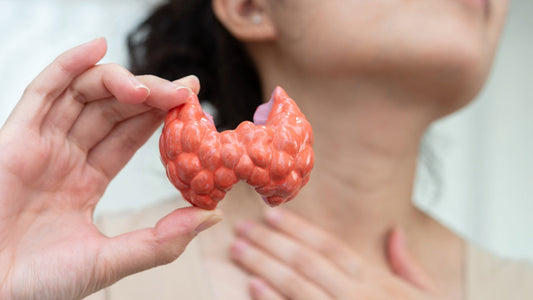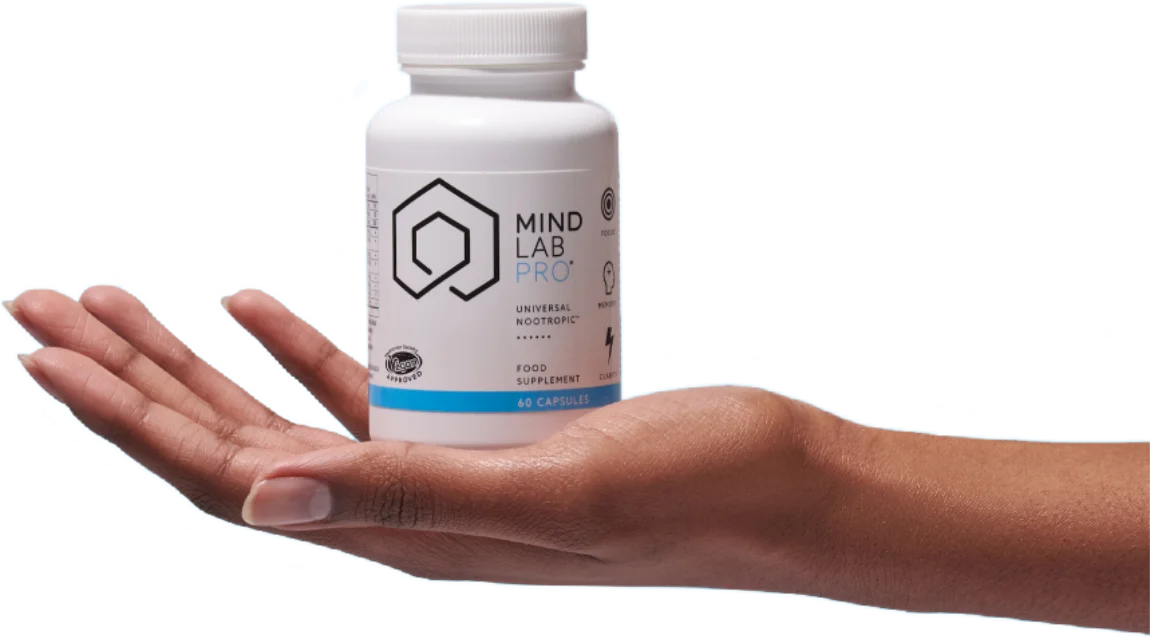Mushrooms include food varieties, traditional medicinals, and psychedelic species -- most notably psilocybin-containing “magic mushrooms.” The last is considered by some as a "drug," due to its psychedelic ties. In this article, we ask a focused question: Are psilocybin mushrooms addictive, like some other "drugs"? What about Fly Agaric mushroom? Are mushrooms addictive at all? We're giving you all the answers in this guide. Let's get to it!
Key Takeaways
- Mushrooms are diverse: Most are edible or medicinal, with only a few species carrying psychoactive effects.
- Psilocybin mushrooms are not addictive: They show no physical withdrawal, rapid tolerance, and very low abuse potential compared with other drugs.
- Psilocybin may help with other addictions: Clinical studies suggest psilocybin, in controlled settings, may help treat addictions like alcohol and tobacco dependence.
- Fly agaric is different: This mushroom poses toxicity risks, and though some people link it to addiction anecdotally, there is no real evidence suggesting it is.
- Other mushrooms: Culinary and medicinal varieties such as shiitake, lion’s mane, and reishi have no links to addictive behavior.
- Legal and safety context: Despite low addiction risk, psilocybin remains illegal in many places and requires caution due to psychological and social risks.
Disclaimer
This article is for informational and educational purposes only and should not be taken as medical advice. Mushrooms, especially psychoactive species like psilocybin and fly agaric, can have powerful effects and may carry legal, psychological, and health risks. Always consult a qualified healthcare professional before considering any substance for therapeutic, recreational, or dietary use. The authors do not encourage or endorse the illegal use of mushrooms or any other drug use (controlled substances).
A Quick Look at Edible and Functional Mushrooms
There are about 14,000 species of mushrooms that grow all around the world. Of these, about 2,000 are edible, with 200-300 that are commonly consumed as foods. Several hundred species are considered "medicinal" and used in herbalism, with about 100 mushroom species that have been studied for their health-supportive potential. Here's a quick snapshot of some of the most popular edible and functional mushrooms.
- Agaricus bisporus (Button/Portobello): The most widely cultivated mushroom, rich in protein and antioxidants.
- Lentinula edodes (Shiitake): Popular culinary mushroom also valued for immune-supportive compounds like lentinan.
- Pleurotus ostreatus (Oyster): Mild-tasting mushroom known for cholesterol-regulating potential and easy cultivation.
- Hericium erinaceus (Lion’s Mane): Edible mushroom linked to nerve growth factor stimulation and cognitive support. Discover the top 7 Lion's Mane benefits
- Psilocybe cubensis (Psilocybin Mushrooms): Psychoactive mushrooms used sacramentally/clinically for altered states; not considered chemically addictive but legally restricted in many regions.
- Amanita muscaria (Fly Agaric): Iconic red-capped mushroom with white spots; produces hallucinogenic and sedative effects but is toxic and not considered safe.
- Grifola frondosa (Maitake, “Hen of the Woods”): Traditional mushroom used for immune regulation and blood sugar support.
- Ganoderma lucidum (Reishi): Bitter, woody mushroom famed for adaptogenic and immune-modulating effects.
- Trametes versicolor (Turkey Tail): Mushroom rich in polysaccharides, used for immune system function and gut health.
- Inonotus obliquus (Chaga): Birch-dwelling fungus prized for antioxidant activity and traditional tonic use.
- Cordyceps militaris / Ophiocordyceps sinensis (Cordyceps): Caterpillar-associated fungi known for energy, endurance, and oxygen uptake.
- Tremella mesenterica (Witch’s Butter/Golden Jelly): Gelatinous fungus used in desserts and skin-health tonics.
- Agaricus subrufescens (Almond Mushroom, Himematsutake): Mildly sweet mushroom studied for immune support.
- Phellinus linteus (Mesima): Woody medicinal fungus traditionally used for immune modulation.
- Tremella fuciformis (Snow Fungus, White Jelly): Jelly-like mushroom prized in desserts and beauty tonics.
The mushroom realm is vast; the above list is the tip of the iceberg. For more information on some of these fungi, check out our articles on mushroom nootropics (cognitive enhancers), stress-busting adaptogenic mushrooms, and our in-depth guide on the best mushrooms for overall health.
What is Addiction?
Addiction is a complex and chronic medical disease. It seen as a compulsive need to use a substance or engage in a behavior, despite harmful consequences -- including both psychological and physical harm to oneself or others. Addiction is considered one of the more insidious mental health disorders because it involves long-lasting functional changes to brain circuits related to reward, stress and self-control.
People with addiction often have an intense focus on the substance or activity, to the point where their ability to function in daily life becomes impaired. This can lead to problems that expand throughout an individual's life; trouble at work or school, damaged relationships, and a decline in physical health.
The hallmark of addiction is loss of control: a person continues to engage in a behavior even though they know it is causing problems for them.
But that's on aspect of insidious addiction. According to the DSM-5 (Diagnostic and Statistical Manual of Mental Disorders, Fifth Edition, published by the American Psychiatric Association (APA), there are 11 symptoms of addiction to look out for. Very briefly, they are:
- Use more/longer than intended
- Want to cut down but can’t
- Spend lots of time on substance or behavior
- Strong cravings
- Fail to meet work/home/school duties
- Keep using despite social problems
- Give up activities for substance
- Use in risky situations
- Keep using despite health harm
- Need more (tolerance)
- Withdrawal symptoms when stopping
Physical Addiction vs. Psychological Addiction
True addiction, sometimes called physical or physiological addiction, involves measurable changes in the body such as tolerance (needing more to achieve the same effect) and withdrawal symptoms when stopping, as seen with alcohol, nicotine, opioids and other addictive substances and forms of drug abuse.
Psychological dependence, by contrast, centers on mental and emotional addiction -- strong cravings, compulsive use, or relying on a substance or behavior to cope -- even in the absence of significant physical withdrawal.
So how does addiction relate to mushrooms? Is addiction to mushrooms possible? Will people get addicted to shiitake mushrooms because they are delicious? Not really. "Addictive mushrooms" don't really exist.
However, two species may possibly be unfairly associated with addiction concerns, because they are psychedelic mushrooms:Psilocybin ("magic mushrooms") and Fly Agaric (Amanita muscaria).
Perhaps because they are powerful psychedelics, some researchers have classified as them as having a low risk of dependence. But just because they are non-addictive does not mean they are risk free. Let's take a closer look at these mushrooms.
Find out about nootropics and addiction risk
Understanding Psilocybin

The psychoactive compound Psilocybin is the primary active ingredient in “magic mushrooms.” In the body, psilocybin is converted to psilocin. This hallucinogenic substance acts on serotonin receptors -- especially in the brain's cortex -- producing the mushroom's famous psychological effects: altered states of perception, mood and cognitive functions. These effects have long been incorporated into spiritual practices in Central America, especially in southern Mexico and Guatemala.
Serotonin receptors can adapt fairly quickly to psilocin, leading to desensitization -- also known as tolerance -- that is associated with more obvious addictive substances.
Ironically, though some may roll Psilocybin in with other "addictive drug" due to its psychedelic effects, emerging research suggests that it may in fact help some people to overcome addiction and the serious negative consequences of substance abuse issues. Let's take a closer look.
Psilocybin Addiction: What Science Says
Low physical dependence potential: Comprehensive reviews using the U.S. Controlled Substances Act’s “8 factors” framework say there is no clear evidence of physical dependence or a withdrawal syndrome with psilocybin in clinical or preclinical literature.(1)
Rapid tolerance (and cross-tolerance): Tolerance emerges quickly with repeated dosing, and classic work shows cross-tolerance with LSD -- features that tend to limit the compulsive, high-frequency use associated with addictive substance. Abusing psilocybin mushrooms is possible, but rare due to the intensity of the psychedelic experience.(2)
Abuse potential relative to other drugs: Expert harm-assessment frameworks consistently place classic psychedelics (including psilocybin) among the lowest for dependence risk compared with alcohol, opioids, and stimulants.(3)
Psilocybin therapeutic angle: Help for addictions
Beyond low dependence risk, taking mushrooms in the context of psilocybin-assisted therapy has shown promise for some substance use disorders, including addictions to alcohol and nicotine (smoking).
Psilocybin-Assisted Therapy for Alcohol Use Disorder
In a randomized, double-blind clinical trial comparing psilocybin-assisted psychotherapy to an active placebo plus identical psychotherapy, researchers found that subjects taking psilocybin showed a significantly greater reduction in heavy-drinking days over the follow-up period. Positive secondary outcomes (such as overall alcohol consumption and drinking-related consequences) also favored psilocybin, with a generally well-tolerated safety profile. The authors concluded that, when combined with psychotherapy, psilocybin can produce clinically meaningful improvements in heavy drinkers.(4)
Psilocybin for Smoking Cessation
In an open-label pilot study combining psilocybin sessions with cognitive-behavioral therapy for nicotine dependence, long-term smokers achieved high abstinence rates at multiple follow-ups (including 6 and 12 months). Participants frequently reported increased motivation, altered perspectives on smoking, and enhanced self-regulation as mechanisms supporting smoking cessation. It wasn't the greatest study in terms of design; nevertheless, the findings may suggest that psilocybin, delivered in a therapeutic and well-prepared context, may help spark behavior changes in tobacco dependence.(5)
Note: Although psilocybin shows low physiological dependence risk, some individuals may develop a psychological attachment to the experiences of a "magic mushroom trip" -- seeking repeated “breakthroughs” as escape. Clinical psilocybin-assisted programs emphasize preparation, "set and setting" (a phrase referring to creating a safe and secure physical or social environment, as well as screening for psychiatric issues and mental health conditions, all to mitigate "psychological addiction" and other risks.
Legal and Social Notes
Psilocybin is one of the psychedelic drugs classified as a Schedule I controlled substance in the United States and remains illegal in most places worldwide, despite its low addictive potential and emerging medical promise. Recently, however, some regions (Oregon, Colorado, parts of Canada) have decriminalized or piloted regulated therapeutic access to magic mushrooms.
Understanding Fly Agaric

Fly agaric (Amanita muscaria) is one of the most recognizable mushrooms in the world, easily identified by its bright red cap dotted with white spots.
Unlike psilocybin mushrooms, it does not act through serotonin receptors but instead contains the compounds ibotenic acid and muscimol, which influence the brain’s GABA system. Each of these is a naturally occurring substance that can produce sedative, hallucinogenic, and dissociative effects, but also carry a risk of nausea, confusion, severe anxiety and toxicity.
Fly agaric mushrooms typically are used in shamanic rituals in Siberia and northern Europe, where it was sometimes consumed to induce trance states, visions and other hallucinogenic effects.
Today it is occasionally misused for its psychoactive properties, though it is not considered chemically addictive. The greater concern lies in its unpredictable effects and potential toxicity compared to psilocybin mushrooms; technically fly agaric are poisonous mushrooms.
Fly Agaric and Addiction: What Science Says
One review on Amanita muscaria (fly agaric) examined both reported harms and potential therapeutic claims. The authors highlighted that while some individuals consume fly agaric for conditions such as depression, anxiety, and insomnia, the scientific evidence supporting these uses is extremely limited.
Most of the literature instead links Fly Agaric to adverse effects, including gastrointestinal upset, neurological symptoms (confusion, ataxia, tremors), and poisoning cases requiring medical intervention. Importantly, the review found no good evidence of physical dependence or addiction risk. The primary concern with fly agaric remains its unpredictable psychoactive effects and possible unpleasant side effects, rather than any addictive potential.(6)
Summary
Mushrooms occupy a wide spectrum of human use: from everyday food to time-honored medicinals to powerful psychedelics. When it comes to the question of addiction, the science is clear -- psilocybin mushrooms addiction does not exist, at least not in a chemical and physiological sense.
Magic mushrooms do not trigger withdrawal, they develop tolerance quickly, and they rank among the lowest substances for abuse potential. In fact, research shows psilocybin may assist with mental health issues, potentially helping people break free from addictions to alcohol or nicotine when combined with therapy.
Fly agaric (Amanita muscaria), although psychoactive, also shows no evidence of addiction risk. However, in excessive doses it is a toxic mushroom and carries some unpredictable effects, including emotional distress.
Beyond these two, the thousands of edible and functional mushrooms -- from shiitake to reishi -- carry no association with dependence. Some, like lion's mane, may even support overall mental well-being.
The bottom line: mushrooms are overwhelmingly non-addictive. But while some may offer healing potential, psychoactive species still carry legal risks, psychological dangers, and demand careful, informed, and respectful use.
References
- Johnson, M. W., Garcia-Romeu, A., Cosimano, M. P., & Griffiths, R. R. (2014). Pilot study of psilocybin in tobacco addiction. Journal of Psychopharmacology, 28(11), 983–992. Link.
- de la Fuente Revenga, M., et al. (2022). Tolerance and cross-tolerance among psychedelics. ACS Chemical Neuroscience. Link.
- Johnson, M. W., Griffiths, R. R., Hendricks, P. S., & Henningfield, J. E. (2018). The abuse potential of medical psilocybin according to the 8 factors of the Controlled Substances Act. Neuropharmacology, 142, 143–166. Link
- Bogenschutz, M. P., et al. (2022). Psilocybin-assisted treatment for alcohol use disorder. JAMA Psychiatry. Link
- Johnson, M. W., Garcia-Romeu, A., Cosimano, M. P., & Griffiths, R. R. (2014). Pilot study of psilocybin in the treatment of tobacco addiction. Journal of Psychopharmacology, 28(11), 983–992. Link
- Grochowska, A., Dabbrowska, K., & Waszkiewicz, N. (2024). Harmfulness and potential health benefits of the fly agaric (Amanita muscaria). Journal of Education, Health and Sport, 14(4), 335–345. Link




